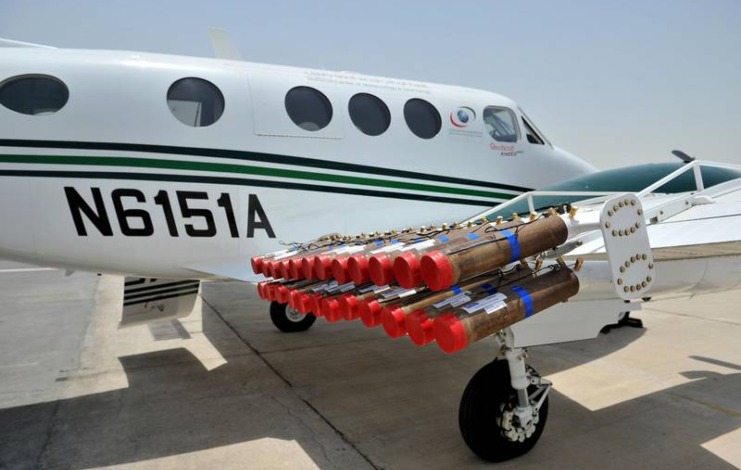The UAE’s Cloud Seeding is about to get a major upgrade thanks to the application of artificial intelligence and machine learning that’s supposed to make it more efficient and effective.
What is Cloud Seeding?
First, let’s talk about what “Cloud Seeding” is; it’s basically a way of extracting more rainwater from clouds with the help of external/manmade solutions. The UAE cloud seeds use a multitude of different methods to achieve their results. They include drones that fly up into the clouds providing them with an electric shock, which causes water droplets to stick together, making them heavy and leading to rainfall.
Another often-used method is sending planes to cloud levels and shooting out flares carrying materials such as salt. When fired, the salt brings water molecules together due to its strong moisture absorbent properties, leading to heavy droplets and causing rain.

How The New AI Is Going To Better The Process?
The new AI is, at its core, an algorithm that combines satellite reports, historical weather data, radar information, and on-the-ground observations to better predict where the water will fall as well as where it’s best to cloud seed within the country’s borders.
This data will provide the officials with the best areas to cloud seeding and allows them to redirect pilots already in the air to more effective destinations where they can fire their flares.

The UAE’s Research Programme for Rain Enhancement Science awarded the Centre for Western Weather and Water Extremes at the University of California, San Diego, and its director Dr. Luca Delle Monache, $1.5 million for the AI project, relying on their expertise in the matter.
“We think we will improve the whole procedure of cloud seeding with these algorithms. We need to learn what happened in the past to make a good estimate. We use two-thirds of the data for training and one-third to see how well we are doing at estimating precipitation. That’s how we build the machine-learning model. Once it is built, it can be used with the data from today. That’s the goal,” Dr. Delle Monache, an expert in numerical weather prediction, data simulation, and machine learning, told The National News.
Why Does The UAE Need Cloud Seeding?
Like several countries in the region, large areas in the UAE suffer from being arid lands; the weather isn’t helping either, especially with the hazards of climate change, this situation pushed the country to look for alternative ways to have water security not just for its people but for crops and plants as well.
Cloud seeding is one of these solutions; it’s also an easier method compared to desalination, which uses a lot of energy to achieve and isn’t as environmentally friendly.
Can’t Cloud Seeding Cause Issues?
Yes, they can, even with best practices performed to get the most amount of water, some storm clouds can cause extra chaos when added into the equation. Recently, the UAE has suffered intense rainfall leading to floods due to a situation similar to this.
“Precipitation is generated by a series of atmospheric processes, which interact one with another. It is very non-linear; even chaotic, so it is very difficult to predict the evolution. But there are several examples where it has shown to have worked if material is injected in right areas of clouds.”
“[This would be a] very intense storm with a lot of intense precipitation,” he said. “These storms are easily predicted and those are not the ones the algorithms would identify as suitable for seeding because there is already intense precipitation,” Dr. Delle Monache told The National News.
The cloud seeding process has been effective for years now, and with this boost, the country should expect a more effective and well-directed rainfall in the areas that need it the most.
We Said This: Don’t Forget… Agile, Versatile, Deadly: 6 MENA Airforces & Their Surgical Fighter Jets





